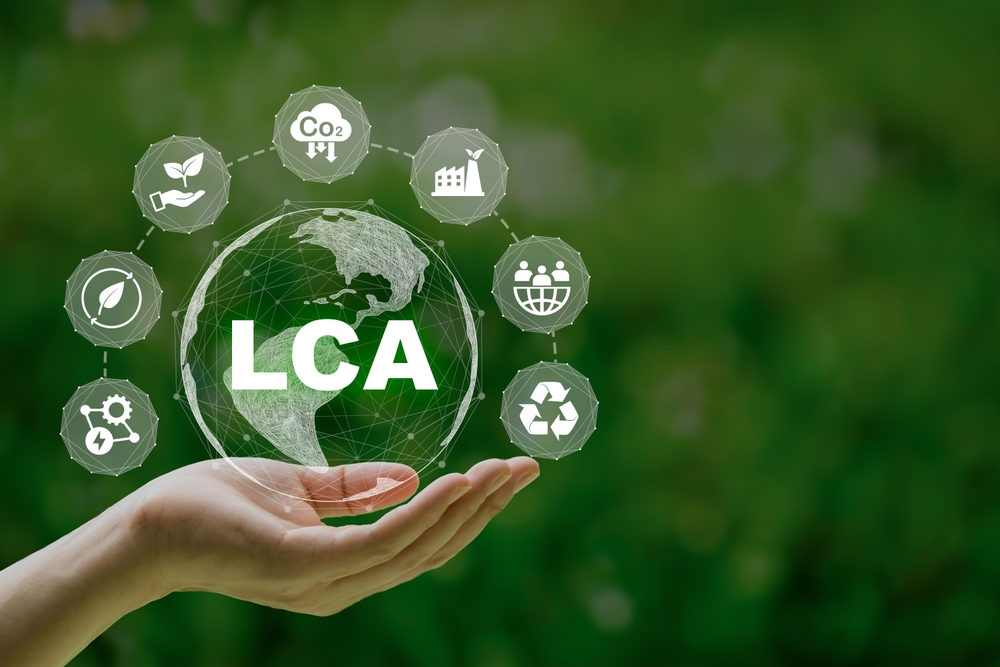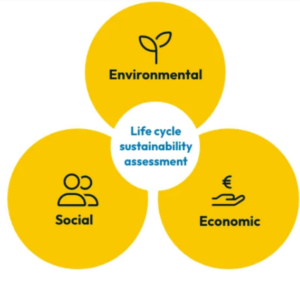
Proving Sustainability: The Crucial Role of Life Cycle Assessment for our Upcycling Innovations
The ACTPAC project aims to convert polyethylene (PE) (fossil-based) into bio-based polyesters. Innovations on new biobased catalytic routes in ACTPAC will establish the most profitable upcycling scenario for ZERO-waste management by reclaiming new value out of the plastic wastes; and simultaneously mitigating plastic pollution from the environment. This will have a long-term impact on our living environment, improving resilience, and restoration of water, sea, soil, biodiversity and ecosystem’s balance.
How can these environmental benefits be measured? How is it possible to demonstrate that these new routes have less environmental impacts than the conventional routes? A life-cycle assessment can be performed. Life-cycle assessment (LCA) is a process of evaluating the effects that a product has on the environment over the entire period of its life thereby increasing resource-use efficiency and decreasing liabilities. It can be used to study the environmental impact of either a product or the function the product is designed to perform. [1]
As its name indicates, LCA evaluates the environmental impact throughout its entire life cycle, including production and consumption process. LCA is limited by its reliance on data availability. [2]
LCA is defined by ISO 14040 and ISO 14044. Along the lines of these standards, there are 4 main phases: [3]
- Goal and scope
- Inventory analysis (LCI – Life cycle inventory)
- Impact assessment (LCIA – Life cycle impact assessment)
- Interpretation
In the goal and scope phase, the aims of the study are defined, the reasons for carrying out the study and the intended audience. Main methodological choices are made in this step, in particular the exact definition of the functional unit, the identification of the system boundaries, the identification of the allocation procedures, the studied impact categories and the LCIA models used, and the identification of data quality requirements.
The life cycle inventory (LCI) phase involves the data collection and the calculation procedure for the quantification of inputs and outputs of the studied system. Inputs and outputs concern energy, raw material and other physical inputs, products, co-products and waste, emissions to air/water/soil, and other environmental aspects.
In the life cycle impact assessment (LCIA) phase, LCI results are associated to environmental impact categories and indicators.
Finally, in the interpretation phase, results from LCI and LCIA are interpreted in accordance with the stated goal and scope.
The combination of the LCA (quantifying the environmental impact), with the life cycle costs (economic impact) and the social life cycle assessment (social impact) results in the sustainability life cycle assessment. [4]

AIMPLAS, Plastics Technology Centre, is working on the life cycle sustainability assessment to quantify the environmental, economic and social impacts of the new routes developed in the ACTPAC project.
Author: Maria Llàcer
References:
[1] European Environment Agency. Terms. Life cycle assessment. Online: https://www.eea.europa.eu/help/glossary/eea-glossary/life-cycle-assessment#:~:text=Life%2Dcycle%20assessment%20(LCA),use%20efficiency%20and%20decreasing%20liabilities. [15/07/2024].
[2] Science Direct. (2020). Life Cycle Assessment definitions. Online: https://www.sciencedirect.com/topics/earth-and-planetary-sciences/life-cycle-assessment Consulted: [15/07/2024].
[3] European Commission. European Platform on LCA/EPLCA. Online: https://eplca.jrc.ec.europa.eu/lifecycleassessment.html Consulted: [15/07/2024].
[4] AIMPLAS. (2024). Life Cycle Assessment. Online: https://shorturl.at/KXwUT. Consulted: [15/07/2024].
Links:
Keywords:
Life cycle assessment, environment, impact, sustainability, social impact, economic impact


